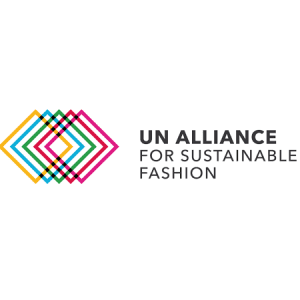Summary
The United Nations Alliance for Sustainable Fashion is an initiative of United Nations agencies and allied organizations designed to contribute to the Sustainable Development Goals through coordinated action in the fashion sector.
Specifically, the Alliance works to support coordination between UN bodies working in fashion and promoting projects and policies that ensure that the fashion value chain contributes to the achievement of the Sustainable Development Goals’ targets.
The initiative is comprised of 10 different United Nations organizations was formally launched in March 2019 by the United Nations at the UN Environment Assembly in Nairobi, Kenya. The Alliance seeks to halt the environmentally and socially destructive practices of fashion, pointing to the fact that the fashion industry is the second-biggest consumer of water and is responsible for 8-10 percent of global carbon emissions.
Fashion and Sustainable Development
Actors in the fashion sector have a critical role to play in achieving the Sustainable Development Goals. The fashion industry is a $2.4 trillion-dollar industry that employs approximately 60 million people worldwide. In fact, one in six people in the world work in fashion-related jobs, with women comprising 80 percent of the labor force throughout the supply chain. And the scale of the industry is only expected to grow over the coming years.
The UN Alliance was formally launched in March 2019 by the United Nations at the UN Environment Assembly in Nairobi, KenyaFurthermore, the industry is the second-biggest consumer of water, generating around 20 percent of the world’s wastewater and releasing half a million tons of synthetic microfibers into the ocean annually. In advance of the U.N.’s Economic Commission’s “Fashion and the SDGs: What Role for the U.N.?” forum in Geneva in 2018, organizers noted too that the production of one shirt requires 2,700 liters, which is comparable to the amount a person drinks in 30 months. In addition to the environmental impact, the fashion industry is linked to labor, gender and poverty issues, which are also outlined in the SDGs.
As for carbon emissions, the industry is responsible for more than all international flights and maritime shipping combined. Part of these emissions come from pumping water to irrigate crops like cotton, oil-based pesticides, machinery for harvesting, and emissions from transport. The industry is responsible for 24 percent of insecticides and 11 percent of pesticides.
The dominant business model in the sector is that of “fast fashion”, whereby consumers are offered constantly changing collections at low prices, and encouraged to frequently buy and discard clothes. Many experts, including the UN, believe the trend is responsible for a plethora of negative social, economic and environmental impacts and, with clothing production doubling between 2000 and 2014, it is crucially important to ensure that clothes are produced as ethically and sustainably as possible.
“Many people succumb to buying seasonal trends that then get thrown away within a couple of months, and it’s just not sustainable. At the launch of the UN Sustainable Fashion Alliance we get to see people developing new fibers that are sustainable, have low water impact and low impact on the environment where they’re produced,” UN Goodwill Ambassador Nadya Hutagalung (2019).
Given its size and global reach, unsustainable practices within the fashion sector have important impacts on social and environmental development indicators. Without major changes to production processes and consumption patterns in fashion, the social and environmental costs of the sector will continue to mount.
The Alliance
The UN Alliance for Sustainable Fashion currently has eight member organisations, namely Connect4Climate, a World Bank Group; the International Labour Organisation; ITC Ethical Fashion Initiative; the UN Development Programme; the UN Economic Commission for Europe; UN Environment, UN Global Compact and the United Nations Office for Partnerships.
The initiative is comprised of different United Nations organizations and other entitiesGoals
Sustainable Development GoalsThe UN Alliance for Sustainable Fashion seek to halt the environmentally and socially destructive practices of fashion, and instead harness the industry as a driver for improving the world’s ecosystems. As such, its objective is to coordinate the U.N. system’s response to the challenges that textiles, fashion and accessories sectors face in achieving the 2030 Agenda for Sustainable Development.
The Alliance improves collaboration among UN agencies by analyzing their efforts in making fashion sustainable, identifying solutions and gaps in their actions, and presenting these findings to governments to trigger policy.
Likewise, the UN Alliance for Sustainable Fashion creates a common platform and dialogue for a host of UN agencies that are working to make fashion sustainable: The Food and Agricultural Organization is promoting Blue Fashion, which uses sustainable marine materials and protects arable land; the International Trade Centre has set-up the Ethical Fashion Initiative to spotlight artisans from the developing world; and UN Environment is pushing governments to foster sustainable manufacturing practices.
Projects
UN Alliance ProjectsHere are some of their ongoing projects:
- Promoting Active Collaboration. The Alliance supports collaboration through the development of joint activities, including outreach events, research and new guidelines.
- Knowledge Sharing. The Alliance is fostering more effective knowledge sharing, by fostering transparency on best practices, data and activities of members via a knowledge platform.
- Strengthening Synergies. The Alliance works to improve harmonization and strengthening synergies between existing initiatives
- Outreach and Advocacy. The Alliance works to achieve outreach and advocacy with a unified United Nations voice, targeting the private sector, governments, non-governmental organizations and other relevant stakeholders.
References
https://www.un.org/sustainabledevelopment/sustainable-development-goals/
https://unfashionalliance.org/?fbclid=IwAR3tbyyqjLUq3O8eugtFGdC8ZB6aJl0p1Y9ycT8n8Ua4fry8cJCIyPrVcy4
https://fashionunited.uk/news/business/un-launches-alliance-for-sustainable-fashion/2019031842190
http://web.unep.org/environmentassembly/un-alliance-sustainable-fashion-addresses-damage-%E2%80%98fast-fashion%E2%80%99





